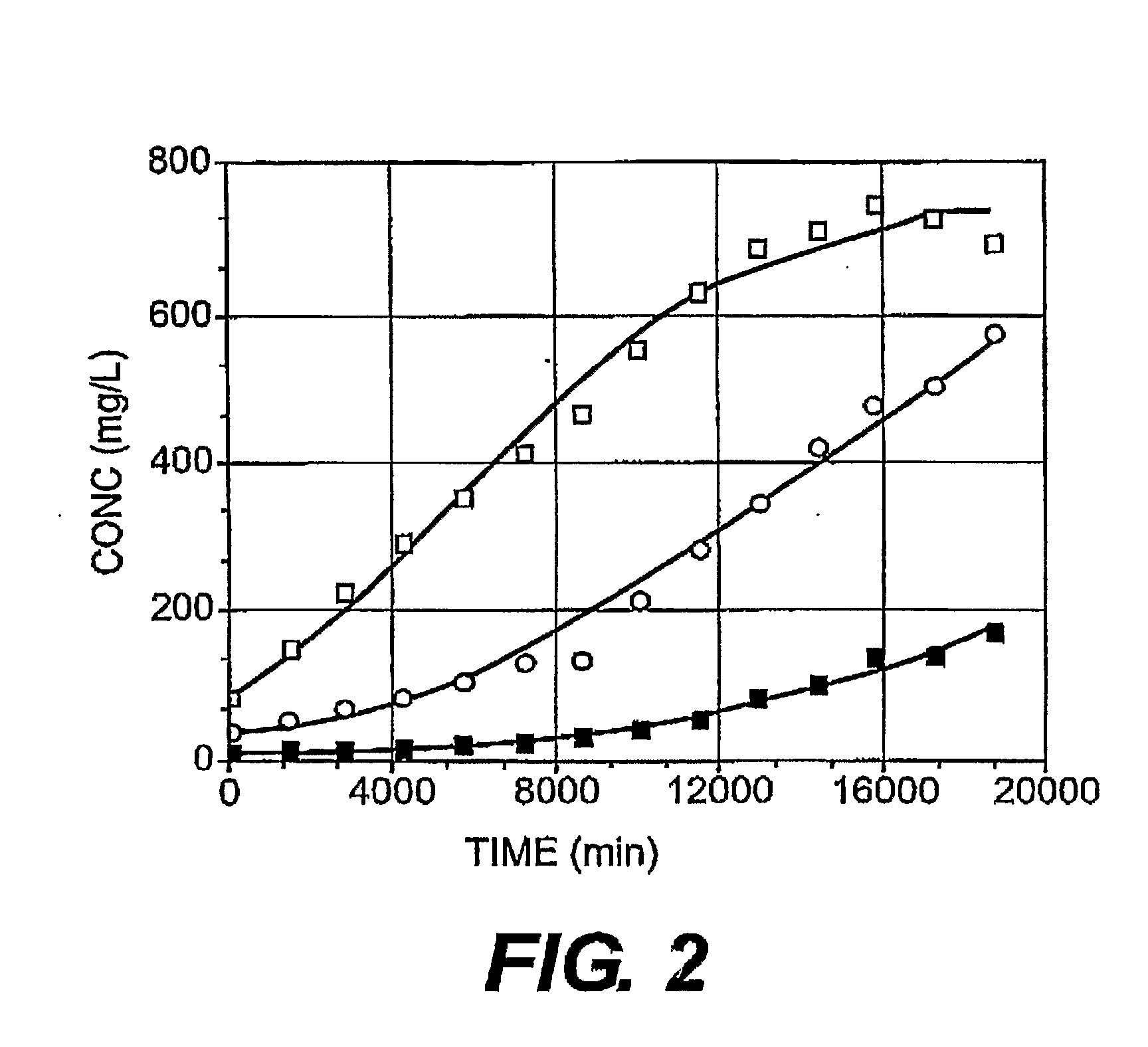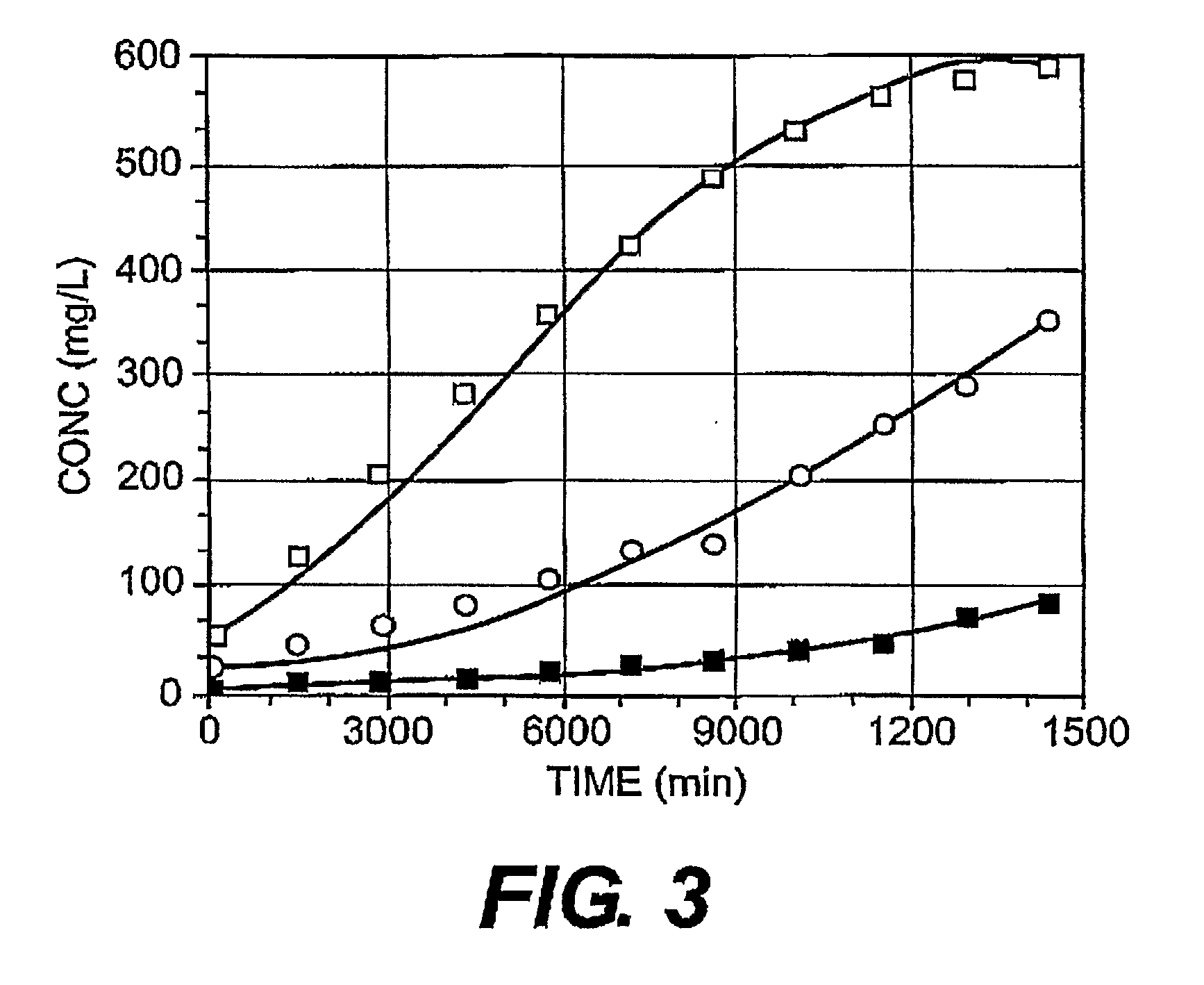Optimization of Heterologous Polypeptide Expression
a technology of heterologous polypeptides and expression optimization, applied in the direction of peptides, immunoglobulins, chemistry apparatus and processes, etc., can solve the problems of reducing production efficiency and adding to production costs
- Summary
- Abstract
- Description
- Claims
- Application Information
AI Technical Summary
Problems solved by technology
Method used
Image
Examples
example 1
Kinetic Modeling of Data
Reaction Sequence for Deamidation
[0039]A model proposed to describe polypeptide deamidation, using monoclonal antibody (mAB) production in Chinese Hamster Ovary (CHO) cells is provided as an example. The invention herein is not meant to be limited in any way by this model, or any other model or theory disclosed herein. The exemplified monoclonal antibody had a known number of potential deamidation sites such that the reaction products included a singly deamidated product (herein, “deAmidA”), and a doubly deamidated product (herein “deAmidB”). Because of the limited number of sites, use of an equilibrium model via an imide intermediate was not believed to be practical; because of the apparent absence of isoAsp and cyclic imide species, the reaction simply reduced to a pseudo first order model in mAB. Thus, the following reaction sequence was targeted for modeling:
Reaction Scheme for mAB Production and Deamidation
[0040]In the reaction sequence above, mAB is pro...
example 2
[0044]Mab production was measured in cell culture using Chinese Hamster Ovary cells using an HPLC method that quantified the total amount of Mab accumulated. Small aliquots of the culture were harvested and purified using small columns (1-4 milliters) packed with Protein A affinity chromatography media. The purified Mab was subjected to ion exchange HPLC, and the various deamidated species were separated and quantified. An example of deamidated and amidated products as observed by this ion exchange HPLC method is presented in FIG. 4. Using this data, kinetic parameters were determined both in the presence and absence of Chinese Hamster Ovary cells. Table 1 displays the rate constants determined for each experiment. Given the assumptions used in preparing the model, the values of k1 and k2 are essentially the same for the cell-free system as for the actual bioreactor system. The kinetic model used is shown in Schemes 1, above. Data fits are shown in FIGS. 1-3. The fits were all high ...
PUM
| Property | Measurement | Unit |
|---|---|---|
| Time | aaaaa | aaaaa |
| Time | aaaaa | aaaaa |
| Concentration | aaaaa | aaaaa |
Abstract
Description
Claims
Application Information
 Login to View More
Login to View More - R&D
- Intellectual Property
- Life Sciences
- Materials
- Tech Scout
- Unparalleled Data Quality
- Higher Quality Content
- 60% Fewer Hallucinations
Browse by: Latest US Patents, China's latest patents, Technical Efficacy Thesaurus, Application Domain, Technology Topic, Popular Technical Reports.
© 2025 PatSnap. All rights reserved.Legal|Privacy policy|Modern Slavery Act Transparency Statement|Sitemap|About US| Contact US: help@patsnap.com



